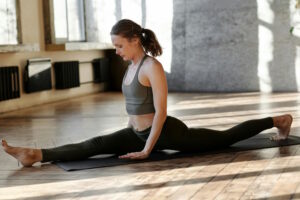
Pilates is a holistic fitness system that has gained immense popularity over the years for its focus on strengthening the core, improving flexibility, and enhancing overall body awareness. If you’re new to Pilates or looking to deepen your understanding of its fundamentals, you’ve come to the right place. In this comprehensive guide, we will explore the basics of Pilates, including its core principles, getting started, and its suitability for beginners.
What are the basics of Pilates?
The basics of Pilates are the foundational elements that underpin the entire system. Pilates was developed by Joseph Pilates in the early 20th century as a method to improve physical and mental well-being. At its core, Pilates emphasizes the following key principles:
1. Centering: Pilates focuses on the core muscles, often referred to as the “powerhouse.” This includes the muscles of the abdomen, lower back, hips, and buttocks. Centering ensures that all movements originate from a strong, stable core.
2. Concentration: Pilates requires a high level of mental concentration. Practitioners must focus on their breath, movement, and body alignment during exercises. This mental engagement helps develop better body awareness and control.
3. Control: In Pilates, movements are deliberate and precise. It’s not about quantity but quality. Each exercise should be executed with control to avoid strain or injury.
4. Precision: Precision goes hand in hand with control. Pilates exercises are designed to be performed with exact alignment and form. This precision maximizes the benefits while minimizing the risk of injury.
5. Breathing: Proper breathing is a fundamental aspect of Pilates. It’s typically deep, diaphragmatic breathing, where you inhale through the nose and exhale through the mouth. The breath helps facilitate movement and oxygenates the body.
6. Flow: Pilates exercises are often performed in a flowing, continuous manner. This fluidity between movements helps improve flexibility, coordination, and balance.
What are the 5 principles of Pilates?
The 5 principles of Pilates, as outlined above, are core components of the Pilates method. These principles are interrelated and work in harmony to create a balanced and effective workout routine. Let’s delve a bit deeper into each one:
· Centering: Centering involves initiating all movements from the core, which is often referred to as the powerhouse. A strong core provides stability and support for the rest of the body, reducing the risk of injury.
· Concentration: Concentration is vital in Pilates to ensure that you are fully engaged in each movement. By focusing your mind on the task at hand, you develop a heightened awareness of your body and its movements.
· Control: Control in Pilates means executing exercises with precision and purpose. It’s about maintaining proper form and not relying on momentum. This control not only maximizes the effectiveness of the exercises but also minimizes strain on muscles and joints.
· Precision: Precision in Pilates is all about executing movements with exact alignment and form. Each exercise is designed to target specific muscles and movement patterns, and precision ensures you’re working the right muscles and avoiding compensation patterns.
· Breathing: Proper breathing is integral to Pilates. It helps facilitate movement, oxygenate the body, and release tension. The breath should be coordinated with each movement, emphasizing the importance of the breath-movement connection.
How do I start basic Pilates?
Starting basic Pilates is a gradual process that begins with the following steps:
1. Find a Qualified Instructor: Consider taking classes with a certified Pilates instructor, especially if you’re new to the practice. They can provide guidance on proper form and technique.
2. Assess Your Fitness Level: Be honest about your current fitness level and any physical limitations. This will help you choose appropriate exercises and modifications.
3. Learn the Fundamentals: Begin with an introduction to the basic Pilates exercises. Focus on understanding the principles of Pilates, proper breathing, and core engagement.
4. Practice Regularly: Consistency is key in Pilates. Start with a manageable routine and gradually increase the frequency and intensity of your workouts.
5. Listen to Your Body: Pay attention to how your body responds to each exercise. If you feel pain or discomfort, modify or stop the movement and consult with your instructor.
6. Progress Gradually: As you become more comfortable with basic Pilates exercises, you can progressively add more challenging movements to your routine.
7. Stay Patient: Pilates is a journey, and results may take time. Stay patient and persistent, and you’ll see improvements in strength, flexibility, and overall fitness.
Is Pilates good for beginners?
Yes, Pilates is an excellent choice for beginners. Its emphasis on core strength, flexibility, and controlled movements makes it accessible to individuals of varying fitness levels. Pilates can be adapted to suit beginners by starting with basic exercises and gradually progressing to more advanced ones as strength and skill improve.
Additionally, Pilates is known for its low-impact nature, which is gentle on the joints. This makes it a safe option for those recovering from injuries or individuals who prefer a less strenuous workout.
In summary, the basics of Pilates encompass core principles like centering, concentration, control, precision, and proper breathing. Starting basic Pilates involves finding an instructor, understanding the fundamentals, and gradually progressing in your practice. Pilates is indeed a great choice for beginners due to its adaptable nature and focus on controlled, mindful movements. As you embark on your Pilates journey, remember to prioritize consistency and patience to reap the full benefits of this transformative fitness method.